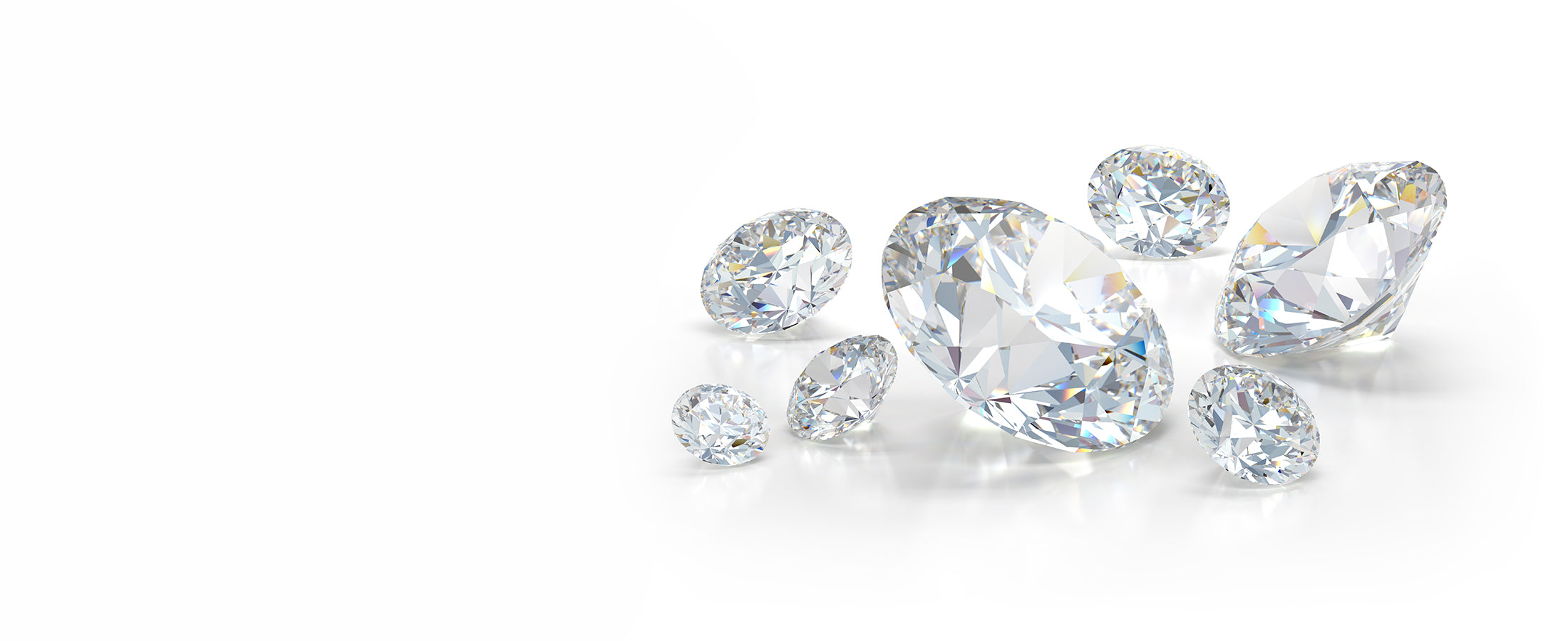Diamond 4Cs and quality
The quality and value of diamonds is influenced by 4 things (4C`s), the most important being colour, clarity, cut quality and weight. It is these four aspects that we pay particular attention to when choosing the right diamonds for our diamond jewellery.
All diamonds used in Festive jewellery undergo a rigorous microscope inspection to monitor the quality of the diamonds and maintain it at a high level. Diamonds weighing 0.30 carats and above are graded in the GIA laboratories and accompanied by a written certificate. For Festive jewellery, we use diamonds of excellent value for money, colour H (Wesselton) and clarity SI1.
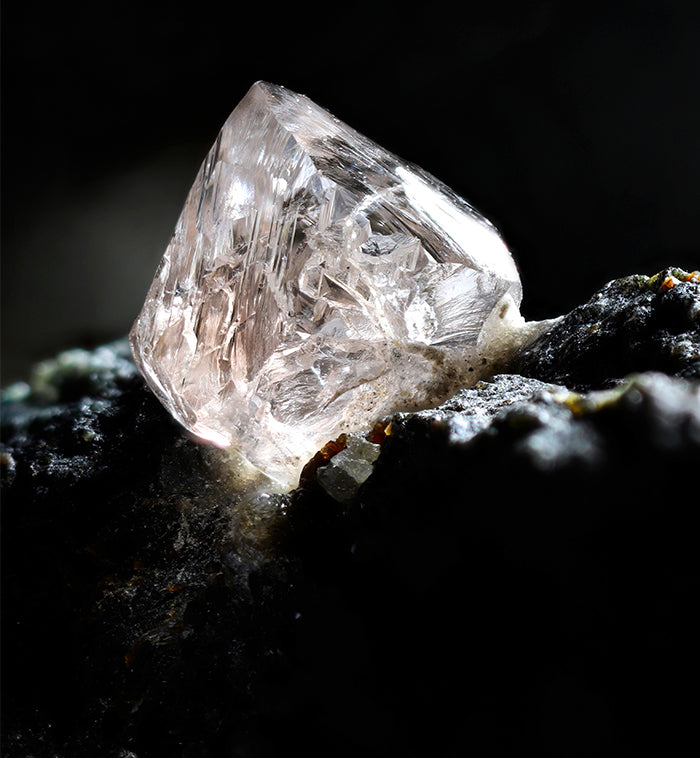
The rarity of diamonds, and therefore their high value, has historically raised many questions about their ethics. This is because diamonds on the market have included diamonds that have been mined from war zones and sold to finance war or rebellion. According to some estimates, as recently as the mid-1990s, 15% of the diamonds sold worldwide were from conflict zones, but by the mid-2000s this had fallen to 1%.
For us as jewellery makers, it is particularly important that the diamonds that serve as crowns and symbols of eternal love are of such origin that their background does not diminish the diamond's dazzling brilliance and dignity. We therefore require our diamond suppliers to provide written certification of the origin and ethics of the diamonds.
Diamond shapes
Diamonds are renowned for their ability to transmit light and sparkle powerfully. The cut of the diamond plays a crucial role in this. We often think of diamond cuts in terms of shapes (round, heart, oval, awning, teardrop, etc.), but the cut and the quality of the diamond cut is really about how well the surface of the diamond interacts with light. A diamond of excellent colour and clarity can lose its value and brilliance if the cut is poorly done. The cut of the diamond is therefore crucial to the ultimate beauty and value of the stone.
Of all the four (4C`s) main characteristics of a diamond, cutting is the most complex and technically difficult to analyse. In a successful cut, proportions, bevels and chamfers tend to interact perfectly with light to produce visual effects: brightness, fire and sparkle.
All Festive jewellery uses expertly cut and carefully selected diamonds, bringing out all the best aspects of the diamond. All diamonds over 0.30 carats come with a GIA (Gemological Institute of America) diamond certificate, which precisely defines the cut values. Cut quality is defined in English terms such as excellent, very good, good, fair and poor. The diamonds we use for Festive jewellery are always graded at least very good for all aspects of the cut.
The picture below shows the most common diamond cuts.
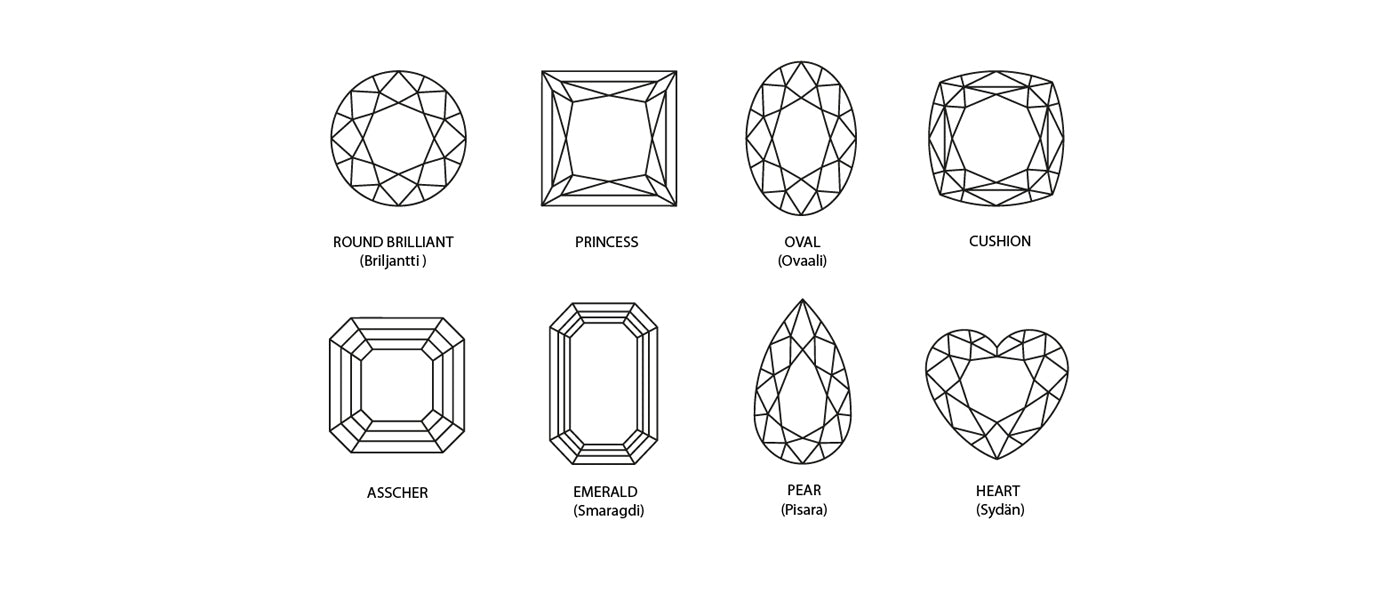
Clarity
Natural diamonds originate from coal exposed to enormous heat and pressure deep inside the earth. This process can lead to a variety of internal and external features called inclusions, cracks, fissures, scratches, chips, etc. Assessing the purity of diamonds involves determining the number, size, nature and location of these features, as well as how these affect the overall appearance of the stone. Purity grading is done at a magnification of 10 times.
Although no diamond is completely pure, the closer it is to pure, the higher the grade. A diamond's clarity scale starts at FL (flawless) and ends at I3 (included, level three). There is also variation in the purity of diamonds within a purity class (e.g. SI). The clarity grade is indicated by a number after the letter combination. The lower the number (1) after the letter scale, the cleaner the diamond.
The figures below illustrate the effect of diamond flaws on the purity grading.
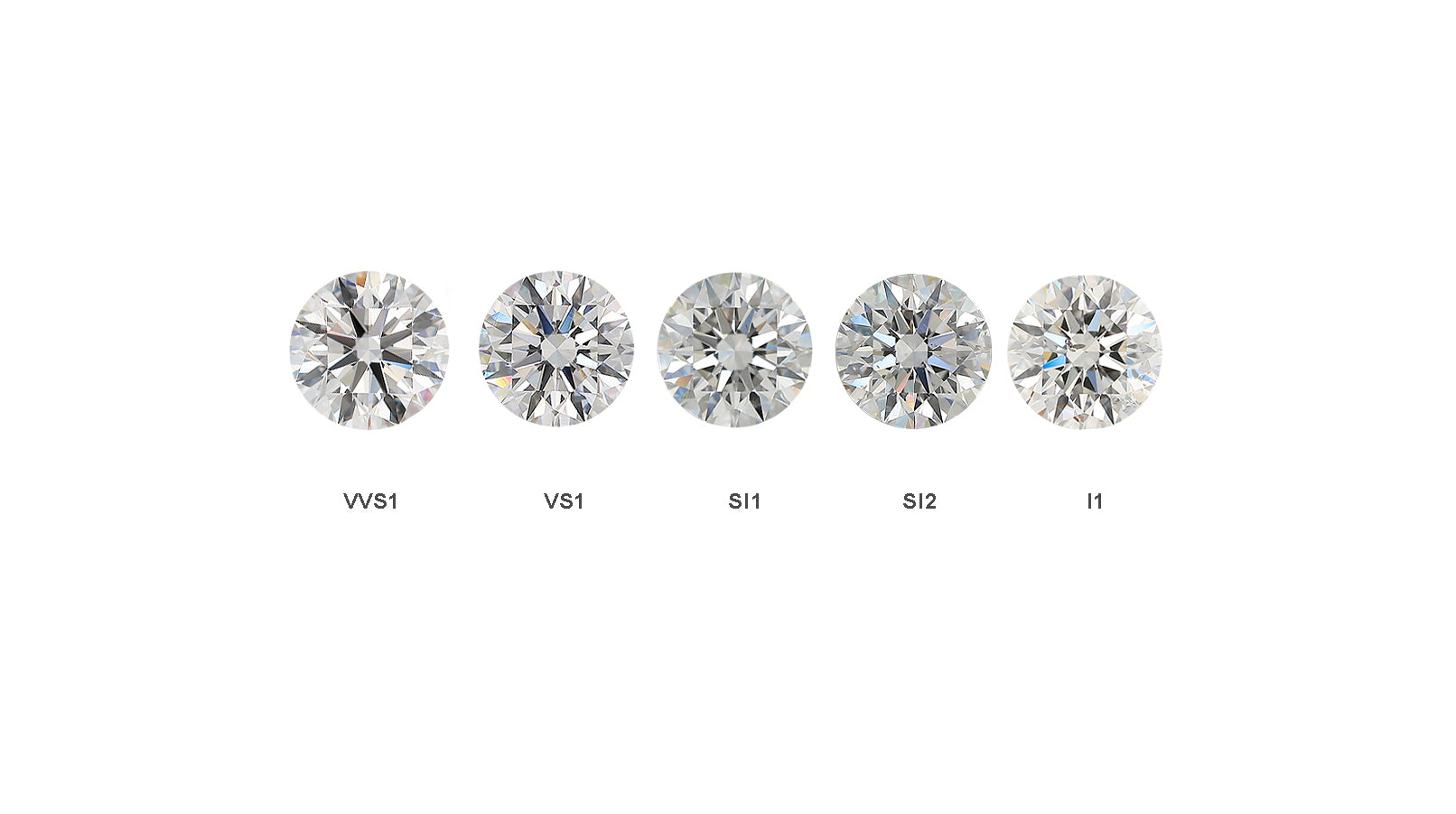
Color
Understanding what is meant by the colour of a diamond will help you choose the right diamond. The colour of a diamond is defined as the absence of colour, so the assessment of colour is based on the amount of yellow or brown tones in the diamond compared to a diamond that is completely colourless. A diamond with a perfect colour is therefore completely colourless, like a drop of clear water. Shades are graded from the rarer colourless to yellow on the GIA's D-Z scale and on the Scan.D.N. scale, which is very commonly used in the Nordic countries and is not as accurate as the GIA scale.
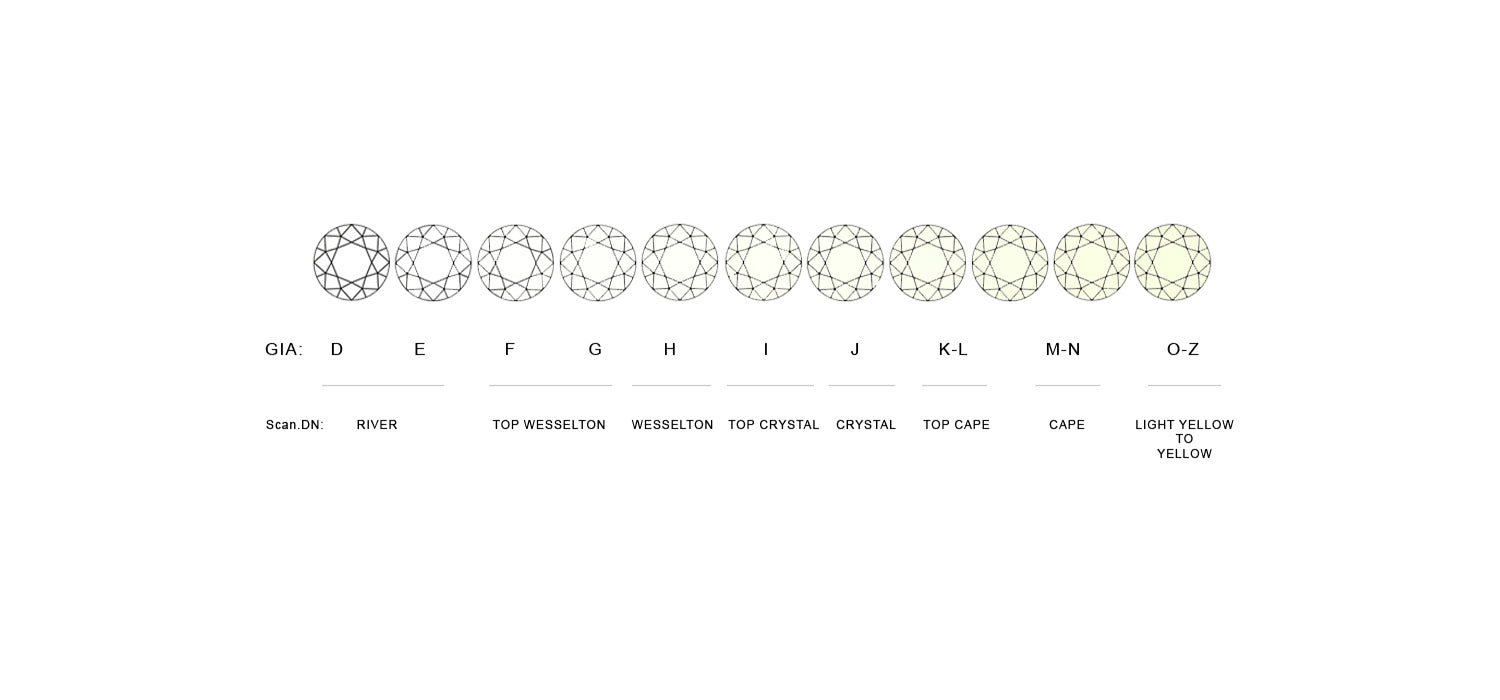
Weight
The weight of diamonds is expressed in carats (ct). One carat is 0.2 grams and is measured by weighing a loose diamond with an accurate diamond balance. The quality of the cut of a diamond affects the diameter of a stone of a given weight. A poorly cut stone may look much larger for its weight, but will lose its brilliance to a smaller-looking well-cut stone. We therefore pay particular attention to the optimum dimensions of diamonds in relation to the weight of the diamond.
Below is an indicative table of how the weight of the diamond affects the diameter of the stone (not shown to life scale).
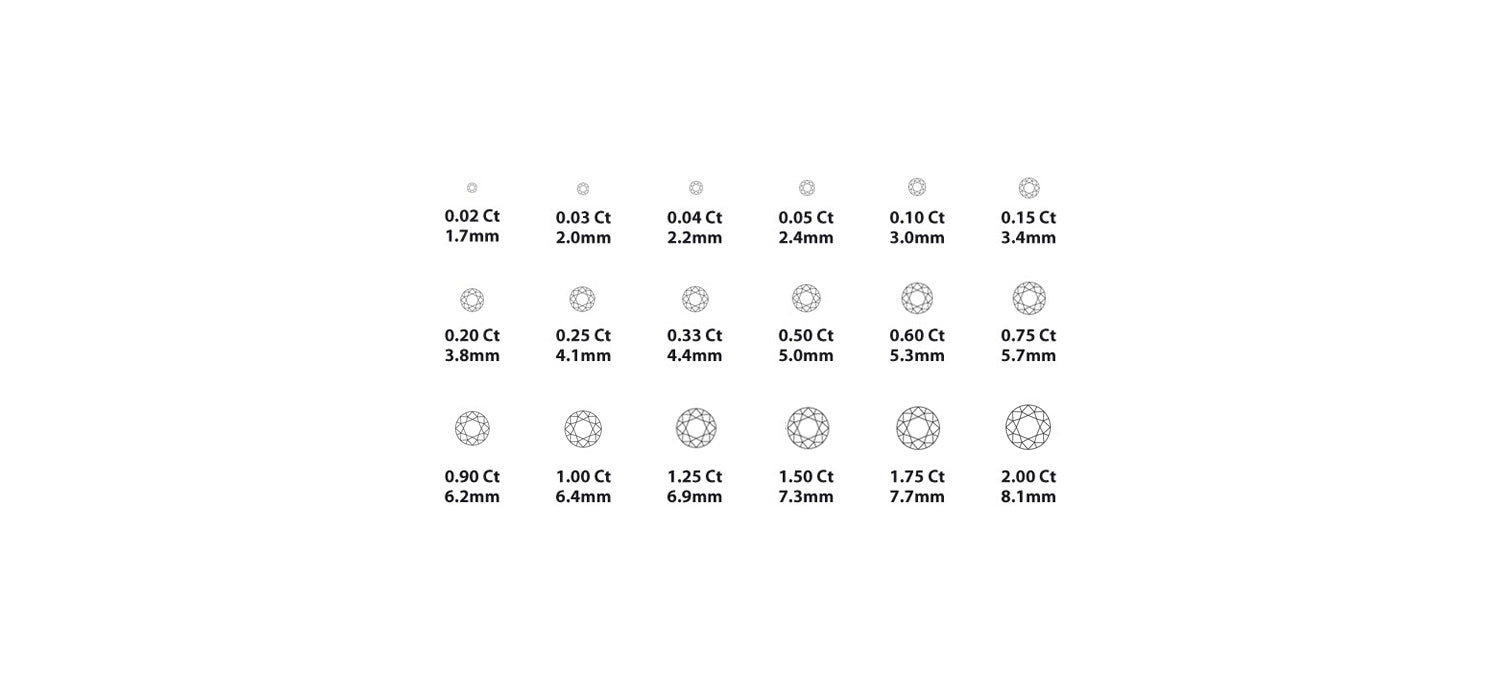
The weight of the diamonds in the jewellery can either be stated separately, e.g. 5 x 0.05 ct, which means that there are 5 pieces of 0.05 ct diamonds in the jewellery, or it can be stated as 0.25 ct in total, i.e. the total weight of the diamonds.
Laboratory diamonds
Laboratory diamonds are man-made diamonds and are created in a laboratory, where the same conditions are simulated as in nature.
Laboratory diamonds have the same chemical structure and properties as natural diamonds. The diamond's superior hardness and durability are the same for both and only a special ultraviolet light tester can tell them apart. Even an experienced expert cannot tell the difference between a laboratory diamond and a natural diamond without special equipment.
HP-HT "High Pressure-High Temperature" which refers to the growing of diamonds under high temperature and high pressure. The second method is CVD which is an abbreviation for "Chemical Vapor Deposition", and refers to the process of growing a diamond from a hydrocarbon gas mixture.
The quality and colour grading is the same for all diamonds whether it is created naturally or by man. All Festive jewellery comes with a Certificate of Authenticity stating the quality and origin of the selected diamond.
Alaboratory diamond is a good option if you want a diamond that looks good and is less expensive.



